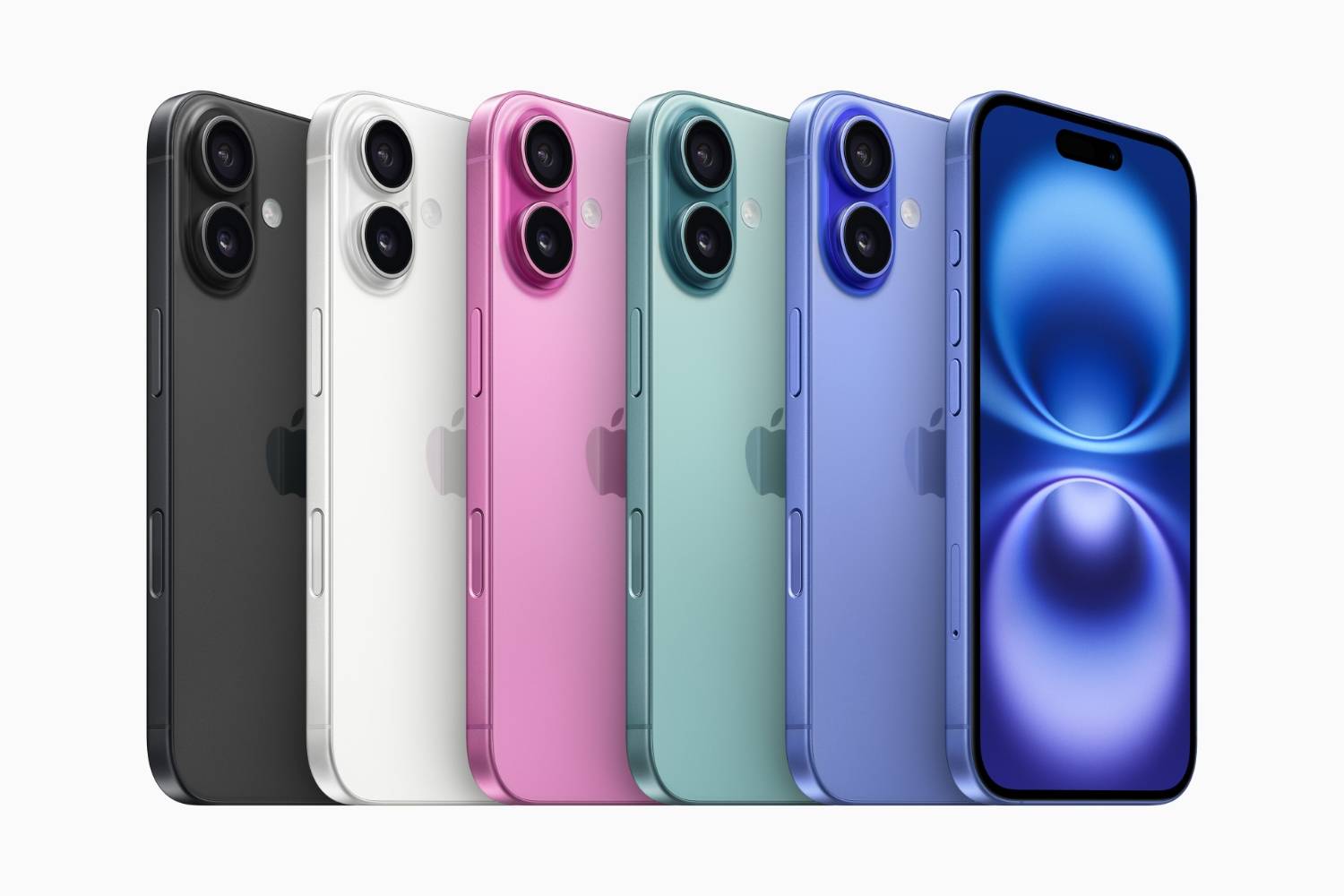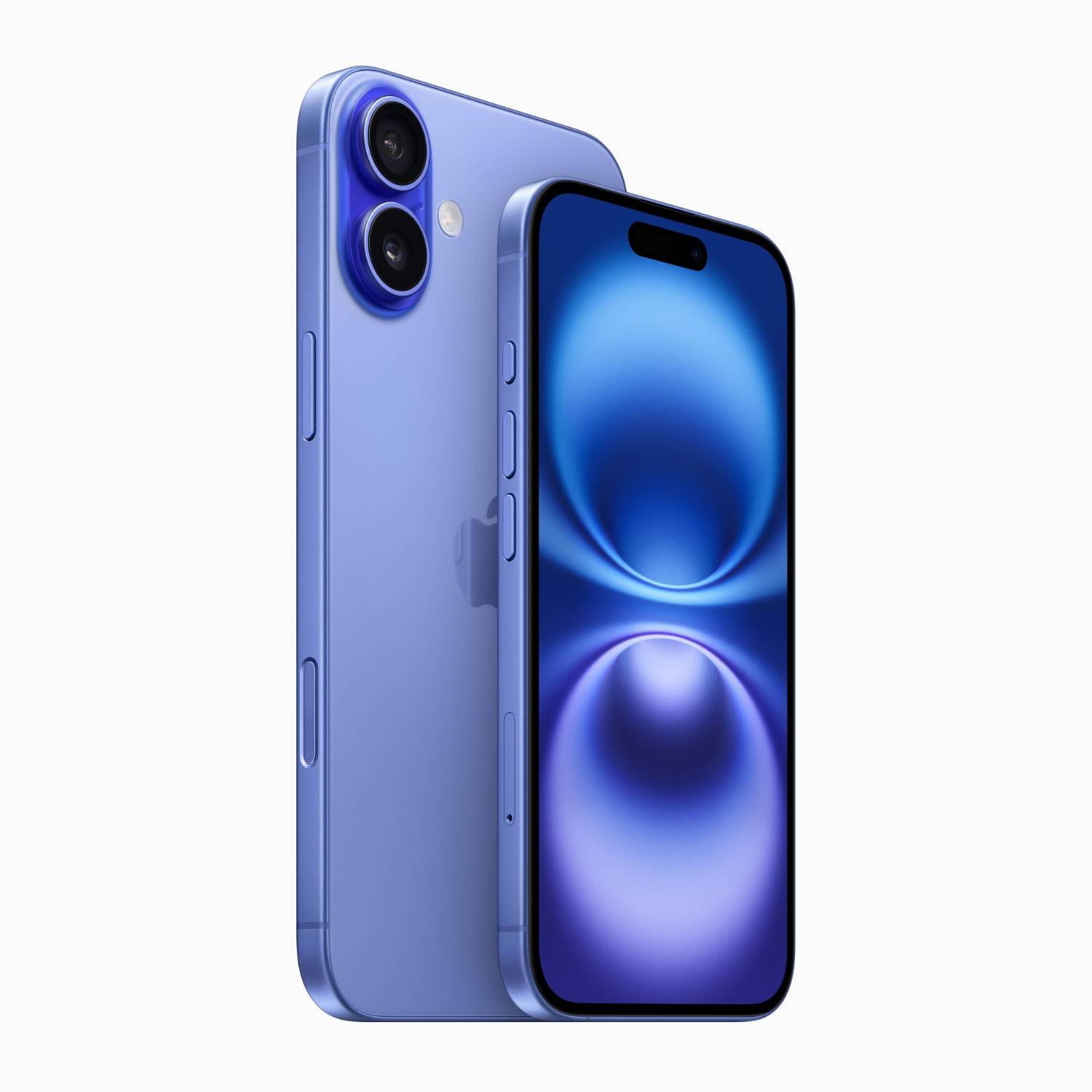Together with the iPhone 16 Pro Max, I also had the opportunity to test both basic models of the latest iPhones. In their case, however, taking into account their new functions, the word “basic” is definitely too small. It is even more difficult to describe them as budget devices. Why? I write about it below.
What’s outside
At first glance, the form has not changed in the case of iPhone 16 and 16 Plus. But nothing could be further from the truth. On the aluminum frame, above the volume buttons, there is an action button, which replaced the mute switch, and a camera control button on the right side, just like in the iPhone 16 Pro and 16 Pro Max, below the sleep button. A big and visible change is the new, vertical island of two cameras on the back wall.

iPhone 16 and 16 Plus are available in five colors: black, white, pink, beryllium green and ultramarine. I had the opportunity to test the white iPhone 16, which – just like the black one – looks classic. The iPhone 16 Plus that I received for testing was beryllium green and I must admit that this color makes a very good impression.

Screen
The devices have OLED screens with a resolution of 2556 x 1179 and a screen diagonal of 6.1 and 6.7 inches, respectively. What is impressive is the very good color reproduction and high brightness, up to 2000 nits. Just like in iPhone 16 Pro and 16 Pro Max, the screens in iPhone 16 and 16 Plus also allow you to lower the brightness to 1 nit – which significantly increases comfort and reduces eye fatigue when using them in the dark. The refresh rate has not changed compared to last year’s models and is 60 Hz. The screens on iPhone 16 and 16 Plus do not support the always on screen mode. I have the impression that Apple has specifically reserved both the always-on function and 120 Hz screen refreshment for the more expensive iPhone Pro.
It is also worth mentioning that the screens of iPhone 16 and 16 Plus have a clearly thicker black border compared to this year’s Pro models, but – to my eye – they are not thicker than the border of the screens in last year’s 15 Pro and 15 Pro Max models.
The new iPhones also have a more durable ceramic cover, which has been at a very good level for years. With my extensive use of iPhones, the last model I managed to break down was the XS Max.
Action button
I mentioned at the beginning that iPhone 16 and 16 Plus gained the action button introduced last year in iPhone 15 Pro and 15 Pro Max. It replaced the physical mute switch. You can assign one of many different functions to an action button, including: activating a magnifying glass, flashlight, music recognition or summoning a camera. Personally, however, I leave the default or factory setting and the action button simply serves to silence the device.
Cameras
The photography island has changed compared to last year’s basic iPhone models. Two cameras are now placed one below the other (if we hold the iPhone 16 or 16 Plus vertically) or next to each other. The photo island is therefore smaller and the flash diode is located outside it. This arrangement of cameras is not only due to the desire for a change (to make the new model different from the one from last year), but also to add the ability to take spherical photos for Vision Pro (which device is still not available in Poland and is unlikely to appear soon).
iPhone 16 and 16 Plus are equipped with two cameras. The main one has a 48-megapixel matrix and a lens with a focal length of 26 mm and f/1.6 aperture. It is worth mentioning that the ability to take photos in the mentioned resolution must be activated manually in the camera settings (Formats -> Resolution Tool). In turn, the ultra-wide-angle camera has a 12-megapixel matrix and a lens with a focal length of 13 mm and f/2.2 aperture. What’s more, the new iPhones allow you to take macro photos with the second camera (iPhone 16 Pro and 16 Pro Max can take macro photos at a resolution of 48 megapixels, which is a big difference).
iPhone 16 and 16 Plus also includes a camera control button for calling the camera, taking photos and controlling parameters. It is identical to the iPhone 16 Pro and 16 Pro Max. Detects the difference between a light and stronger press and the movement of your finger across it (which is useful for adjusting parameters, e.g. zoom, aperture, etc.). I wrote more about the camera control button in the iPhone 16 Pro Max review.
New in the new iPhones 16, 16 Plus, 16 Pro and 16 Pro Max are improved photographic styles and a special panel that makes it easier to adjust them for a specific photo or while taking photos. Just slide your finger across it to change the tone, color or palette.
The camera allows you to record videos in 4K at a maximum of 60 frames per second (in Pro models it is 120 frames per second). 120 or 240 frames per second are only available when recording slow motion videos in 1080p quality.
Sound
iPhone 16 and 16 Plus are not equipped with studio-grade microphones, but the sound they record is of very good quality. What’s more, they also have the function of changing the mix mode, just like in the Pro models. Let me remind you that the following modes are available:
- in the frame (removing sounds from outside the frame, only what is in the frame can be heard)
- studio (removing background sounds and reverbs so that the effect is closest to the studio recording)
- film (exposing voices in the frame with audible spatial voices of the surroundings)
iPhone 16 and 16 Plus can of course play sound in stereo and, as in the case of the Pro models, the effect is better than many cheaper wireless speakers.
Efficiency
The A18 system, manufactured in a 3-nanometer process, has a six-core CPU (two cores are responsible for performance, and four of the six are energy-saving cores), a five-core GPU with hardware support for ray tracing and a 16-core Neural Engine. iPhone 16 and 16 Plus have 8 GB of RAM, which is a significant change compared to last year’s models. The new iPhones 16 and 16 Plus are available in capacities of 128, 256 and 512 GB.
It is worth remembering that the camera control button is ultimately also intended to serve Apple’s artificial intelligence (Apple Intelligence), which we will not be able to use at least in the next few months (I mention whether this is a problem for me or not in the text dedicated to the iPhone owi 16 Pro Max).
Battery
Apple declares that using the included USB-C cable you can charge the iPhone 16 and 16 Plus to half in only half an hour, and this is not an idle boast. I checked it and it is indeed true. Inductive charging via MagSafe can now take place at a power of 25 W. During several weeks of testing using various features of the iPhone 16 and 16 Plus (including watching videos, listening to music, browsing the web, and finally recording videos and playing games). one charge was enough for a full day of work, and sometimes even two.
For whom
This year’s basic iPhone models are hits in my opinion. It must be admitted that Apple has not only equipped them with useful functions, but also reduced their price. However, it is difficult to talk about them in the category of budget smartphones, i.e. intended for people with a smaller budget. Of course, they are much more within the reach of almost every customer, but there are no major compromises here. While testing iPhone 16 and 16 Plus, I get the impression that the difference between these models and the Pro models is starting to be the same as between MacBook Pro and MacBook Air. The choice is not necessarily limited only to the size of the wallet, but it actually depends on whether we need additional performance and whether we will use the iPhone semi- or fully professionally, e.g. in photography or video. There are, of course, some functions that, in my opinion, Apple specifically reserves for more expensive iPhones, and which could be included in the basic models – such as the always-on screen function, available only in Pro models. In general, however, an average user who wants to have an efficient and great iPhone for personal needs, on which he can watch a video, record a movie, listen to music or play games, can – in my opinion – confidently choose one of the basic models, even if he can afford buying an iPhone Pro.
Graphics: Apple
The text was published in MyApple Magazine No. 4/2024
 |
 |
Source: myapple.pl



